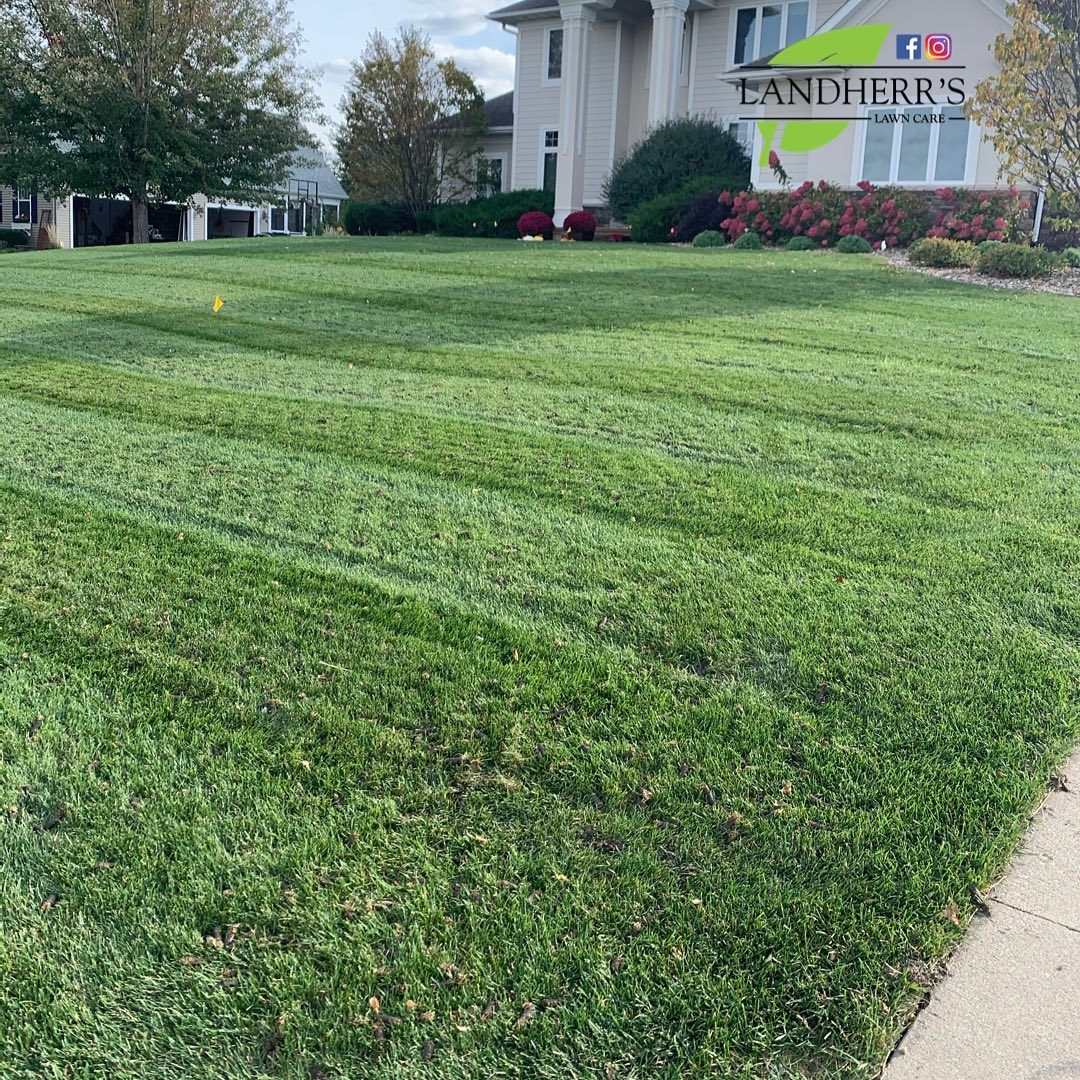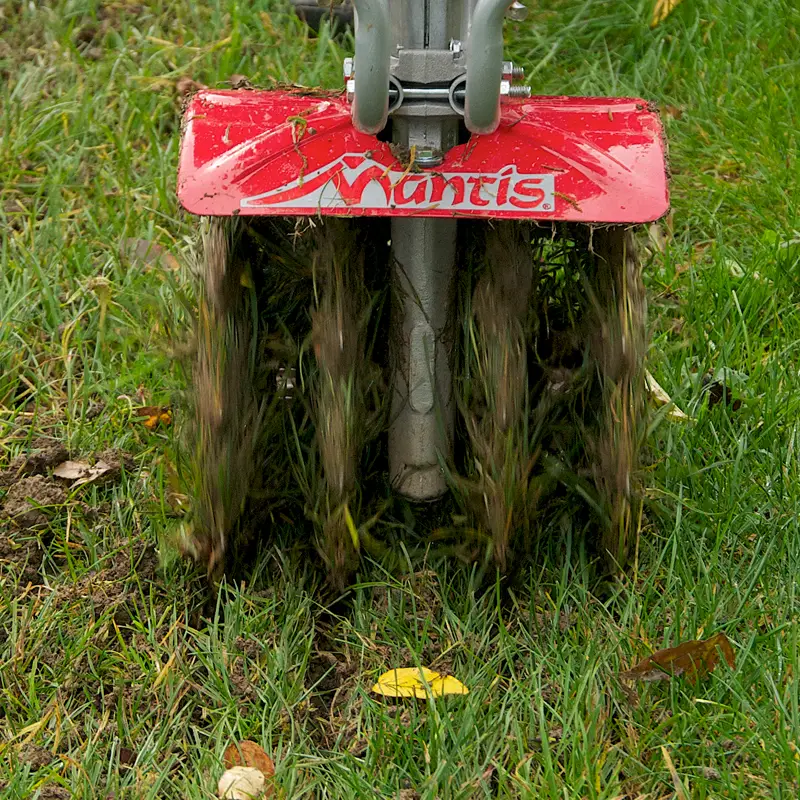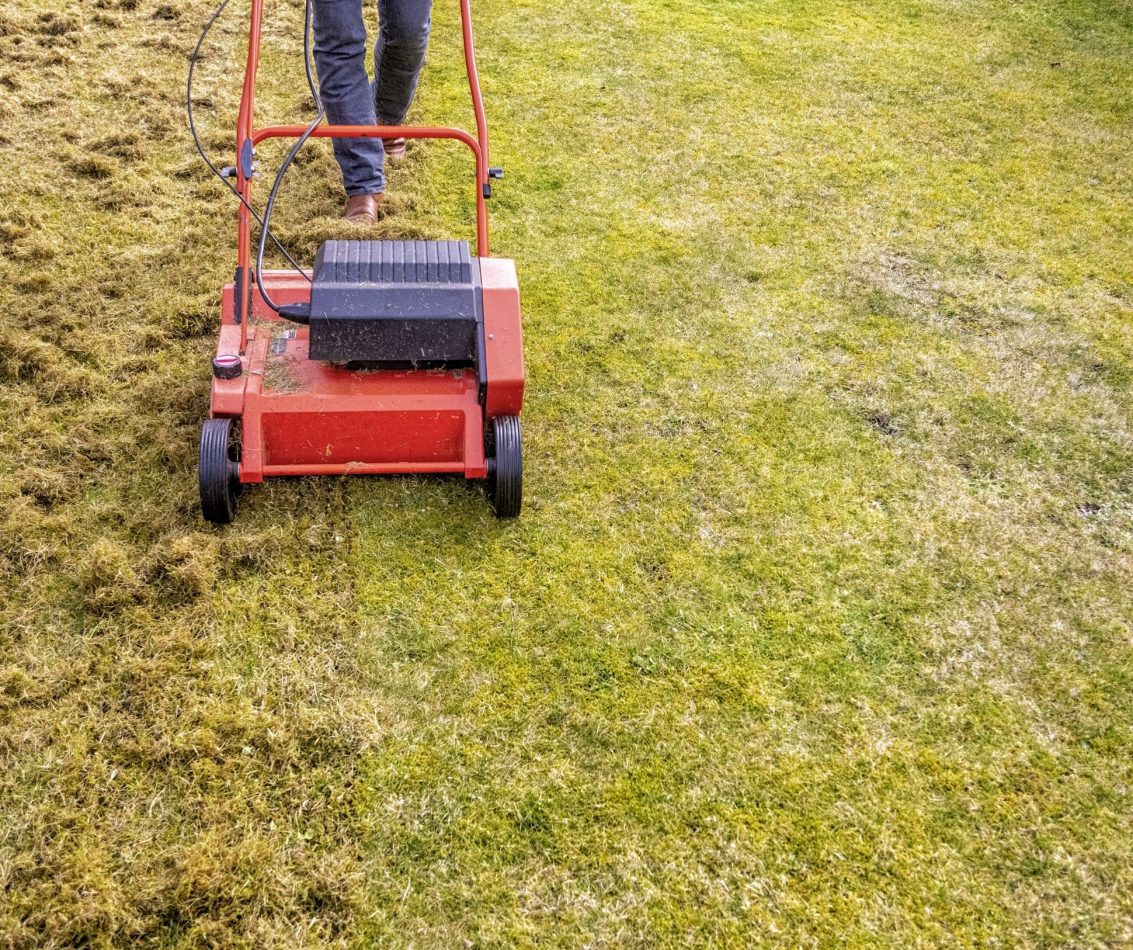What Do You Do After You Aerate Your Lawn
What to Do After Aerating Your Lawn
The Best Time To Overseed Grass
Overseeding means planting new grass to fill in any bare or worn patches. This is helpful for having a gorgeous lawn that looks thick and healthy all year long. The best time to overseed depends on two factors: where you live and what kind of grass you prefer.
Many homeowners in northern states choose cool-season grasses, and southern areas often select warm-season grasses. Each type of grass has distinctive growth patterns and needs, so make sure to speak with our lawn professionals if youre not sure what variety to choose. Here are the optimal overseeding times for several locations and grass types:
- Pacific Northwest : Plant new grasses about six weeks before the first projected snowfall. These are generally cool-season grasses.
- Southwest U.S. : Early spring is the best time for overseeding in these areas.
- Southern states : April, May and June are good times to overseed in this huge area. The best time may vary each year depending on soil temperatures. You want warm-season grass to have a cozy environment to germinate in.
- Northeast states : Due to the cold temperatures prevalent in these areas, its best to start planting grass seeds in August or September to give them some time to grow before winter hits.
- Midwest U.S. : Weather conditions vary quite a bit depending on how far north you live, but a safe bet is to overseed lawns by the end of August or early September at the latest.
Things To Do After Aerating Your Lawn:
When to Aerate Your Lawn, Bayer Advanced, Web. Accessed Jan. 28, 2016
Day, Julie, Spring Lawn Care Guide, TodaysHomeowner.com, Web. Accessed Jan. 28, 2016
Fresenburg, Brad S. Spring Lawn Care Aeration, Fertility and Crabgrass Control, University of Missouri Integrated Pest Management, Web. March 15, 2012
Juror, Richard and Wallace, Greg, Properly Aerating Lawns, Iowa State University Extension and Outreach, Web. Aug. 12, 2015
You May Like: How To Make Money In Lawn Care
The Basics Of Aerating A Lawn
Whatever type of yard aerator you choose, the basics of how to aerate a lawn are the same.
- A few days before you aerate the lawn, mow it to about half its usual height, and then water it well.
- Rake up any fallen leaves or debris.
- Aerate the lawn using your chosen tool. If it’s a spike aerator, make at least two passes over the lawn, each in a different direction. If using a plug aerator, just one pass is needed.
- Leave any soil plugs on the lawn they will return nutrients to the soil as they decompose.
- Fertilize your lawn or apply a top dressing of compost. This is also a good time to reseed any bare patches.
- Return to watering and mowing your grass on its regular schedule.
To keep your grass looking its best, make sure you aerate annually in addition to watering, fertilizing, and weeding on a regular schedule.
Core Aeration For Lawns

The best method of lawn aeration is to use a core aerator . This is the method professionals use.
But most home centers and equipment rental services will rent you a professional core aerator which you can use on your own lawn to save money.
These aerators actually make rows with small spikes that remove the plugs of soil from the lawn. The aerator leaves these plugs on top of your lawn.
Not every machine is the same, and there are different variations of sizes with different widths and depths.
Read Also: How To Recycle Old Lawn Mower
Factors That Impact Aeration Frequency
Compacted soil, as its name suggests, occurs when soil particles are pressed or compacted firmly together.
Compacted soil occurs most often in heavily trafficked areas, like sports fields, playgrounds, new construction lawns. It also occurs when the soil contains a high amount of dense materials like clay, which is common in states like Texas and Louisiana.
The high density of compacted soil limits space for water, oxygen, and nutrients to reach the places they are needed, like grass roots. Compacted soil also makes it difficult for grass roots to expand since breaking through dense soil takes significantly more energy. Due to the unhealthy conditions created by compacted soil, more frequent aeration is necessary.
Over time, dead grass clippings, shoots, and stems accumulate on the top layer of the lawn, creating a barrier between the grass blades and soil. This barrier is called thatch. A small amount of thatch is beneficial because it adds nutrients back into the soil, but when it builds up faster than it decomposes, it creates a barrier and blocks water and air from passing through.
Compacted soil and excessive thatch result in malnourished and unhealthy lawns. Aerating solves for both of these issues by breaking through thatch and plugging holes in compacted soil opening up pathways that were previously closed off. Whenever excessive thatch and compacted soil are present, more frequent aeration is necessary.
Peak Growing Times & Reasons For Aerating Grass
The Spruce / Ana Cadena
The basic idea behind lawn aeration is that, like you, your lawn and the soil under it need to breathe. Aerating a lawn is worth the time and effort because it will help a lawn grow better. But how do you accomplish this? And when should you aerate your grass? Read on to learn how to aerate a lawn yourself and why aerating lawns is beneficial to your landscape.
Don’t Miss: What Can I Use To Green Up My Lawn
Abc Can Care For Your Lawn
Lawn aeration can be tricky if you dont have the right tools and, without the proper experience, you can spend a long time and unknowingly damage your grass. Instead of taking that chance, let the professionals at ABC Home & Commercial Services take lawn aeration off your plate. Not only can we help with this chore, but we can also take over your lawn mowing, fertilizing and watering so you can spend more time enjoying your yard as opposed to working on it.
What Month Should I Aerate My Lawn
Ideally, aerate the lawn with cool season grass in the early spring or autumn and those with warm season grass in the late spring. When experiencing prolonged dry conditions and drought, aeration is recommended. This will improve the passage for water and nutrients to reach the lawns roots when watering is limited.
Don’t Miss: How To Get Lawn Mowing Clients
How To Aerate A Lawn By Hand
Large stretches of turf require gas-powered aerator tools, but if you have a fairly small patch of grass, a handheld aerator will work. There are several types of manual aerators.
- Aerator shoes have sharp spikes on the bottom. Just strap them on over your regular shoes and walk across your grass, making multiple passes in different directions to thoroughly penetrate the turf. If you’re looking for one of the least expensive and most popular aerator tools, consider getting lawn aerator shoes with strong metal buckles like Punchau shoes .
- Handheld aerators come in a variety of configurations but most somewhat resemble a pitchfork. Most are spike aerators, but there are versions that remove plugs. Using a handheld aerator is simple but tiring: Stab the spikes deeply into the grass, pull out, and repeat, taking care to cover the entire lawn. If you have a smaller yard with tiny patches of grass, consider investing in a aerator with a foot bar for extra leverage like the Yard Butler Lawn Coring Aerator, .
- Manual drum aeratorssometimes called lawn spikersare a spike- or blade-covered heavy drum with a long handle. To use, push a drum aerator like the Agri-Fab Push Spike Aerator, across your lawn, making at least two complete circuits in different directions. Most manual drum aerators are spike lawn tools, but some are plug aerators.
How To Aerate A Lawn By Hand: Tips And Tricks
A beautiful lawn is not only pleasing to look at. It also encourages you and your family to spend more quality time outside. In addition, maintaining your yard is also a key aspect of your homes curb appeal, although keeping your grass and plants healthy and beautiful can be a painstaking process. Thankfully, the end result is worth the time and trouble. Here are some tips on how to aerate your lawn if you choose to do this on your own.
First, youll want to choose your tool for aerating. Many homeowners choose a simple spike aerator, which is a metal bar with two spikes at the base that you drive into the soil, two handles at the top and a foot bar for leverage. Others use a sharp gardening tool that can be driven into the soil to create individual holes throughout your lawn. As weve mentioned previously, this method is more time-consuming.
Once you have your tools ready, make sure your soil isnt too wet for aeration. If the spikes you use for aeration come back out of the ground with mud clinging to them, the soil needs time to dry out before continuing. Were also mentioned earlier that you need to make sure to aerate at the right time of year, which is during the peak growing season for your particular variety of grass. Aeration can also be combined with the application of fertilizer to help nutrients soak into the soil as efficiently as possible.
You May Like: How To Dispose Of Lawn Clippings
Does Aeration Actually Work
Lawn aeration is beneficial to almost any soil but it offers the most benefit for soils that are heavily compacted. Clay soil, for example, has very small pores and does not allow air exchange. It also restricts the growth of roots and encourages microbacterial activity that is present in healthy soils .
So What Is Core Aeration

Core aeration is a mechanical process, which extracts cores of soil, thatch and grass from the surface of the lawn to increase nutrient availability, water penetration, soil air exchange and reduce compaction. This improves the effectiveness of your TruGreen services and ongoing watering, leading to a healthier lawn.
Read Also: When To Fertilize Lawn In Minnesota
Why You Should Aerate Your Lawn
Heavy recreational use, active pets, foot traffic and even lawnmowers can compact the soil under your lawn. That impedes root growth and can lead to thatch, a combination of slowly decomposing grass stems, roots and debris that gradually accumulates at the soil surface and keeps water from penetrating.
Aerating regularly helps build healthier soil and limits thatch build-up, so air, water, nutrients and even grass seed can reach the root zone.
The Best Time To Aerate Your Lawn
For the best results when overseeding, our lawn aeration service advises you aerate before planting. The purpose of aeration is to break up the soil and allow it to breathe. That way new grass roots can penetrate deeper into the soil and have access to more nutrients. When should you aerate cool-season grasses and warm-season grasses?
The trick is to aerate right before overseeding. The best time to have lawn care services aerate your lawn in Midwest locations is usually around August or September. In warmer states, aerate in late spring or early summer.
Also Check: Why Is Sevin Prohibited On Lawns
When Should You Aerate Your Lawn What You Need To Know
When your grass starts growing unevenly, thinning out, or changing color, such as turning yellow, it very likely means it needs aeration even if youre feeding it regularly. Unsightly symptoms can occur when you have tightly compacted soil because neither the roots nor the water can penetrate it. Core aerating may sound like a miracle cure for your lawn, but it can do wonders. Keep on reading to learn more about this process and when to aerate your lawn.
- Show 1 more item
How Often To Aerate Your Lawn
There are some variables to consider when it comes to aeration. The time of year as well as the type of soil you have all play a part in scheduling core aeration.
Here are those variables:
Sandy and loam soils dont need regular core aeration because the soils already have oxygen circulating through them. Plus, if you aerate your sandy or loamy soil too often, youll weaken the soil.
Clay soils, for example, need aeration every year or every few years depending on how compacted the ground is. Clay soil holds in water, but cant easily circulate oxygen for plant health.
Core aeration also prepares your soil for receiving grass seed. If you use a slit seeder, the grass seed goes down deep into the ground. This deep planting helps the grass plants to develop deep root systems.
Also Check: Can I Aerate My Lawn In June
When To Aerate Lawns In Colorados Front Range
With Colorado weather changing every other day it can be a little confusing when the best time aerate your lawn is. Thats why Erbert Lawns has created a guide about when to aerate lawns in Colorado, more specifically the front range.
But first, lets talk about why its important to aerate your lawns. Over time you will notice your lawn will grow thin and shorter. Your lawns soil will get compacted from activities, rain, and even snow! This compacted soil doesnt allow for your lawn to soak up nutrients and breathe properly.
The key to proper lawn aeration is knowing when is the best time to aerate. A good rule of thumb is that aeration should be done in the cooler seasons like Spring or Fall. However, living in Colorado, you probably get a little confused when those seasons really start or end. Here are our tips and tricks for aerating your lawns in Colorado during these seasons.
Complete Guide To Aerating Your Lawn: What Is Aeration
Aeration is the process of removing soil cores or plugs from your lawn by extracting little chunks of dirt from the lawn surface. These dirt clumps are ½ inch to ¾ inch in diameter. The holes are typically 1.5 to 6 inches deep and the holes are 2 to 5 inches apart.
So, what exactly does aeration do? It allows for air circulation at the root level of your lawn. This provides the optimal soil condition for healthy grass and growth. Aerating hosts a list of benefits to your lawn.
Read Also: What To Do If You Over Fertilize Your Lawn
How Often You Should Aerate Your Lawn
Knowing the right time of year to aerate your lawn is important, but you also need to nail the frequency of aeration too.
Try to aerate at least once or twice a year for a lawn that experiences high traffic or has clay soil. This type of soil will be more prone to compaction.
If your lawn receives moderate traffic and is composed of loam or silty soil, aerating just once a year is perfectly fine.
And if your lawn receives minimal traffic and has sandy soil, you probably dont need to aerate every year. It seldom compacts, so aerating once every two to three years is sufficient.
If you can, try to time your aeration based on other lawn-care tasks. Aerate your lawn before applying herbicides and overseeding. This will increase the effectiveness of both your seeding and your weed control efforts.
Similarly, its a good idea to aerate before fertilizing and to water within 48 hours after aerating. During the first two to four weeks after aerating, try not to mow. You need to give the grass some time to recover!
Should You Be Aerating Your Lawn

One of the most common questions from homeowners is how to determine if they should be aerating their lawn. Your lawn is probably a good candidate for aeration if it:
- Gets heavy use, such as serving as the neighborhood playground or racetrack. Children and pets running around the yard contribute to soil compaction.
- Was established as part of a newly constructed home. Often, the topsoil of newly constructed lawns is stripped or buried, and the grass established on subsoil has been compacted by construction traffic.
- Dries out easily and has a spongy feel. This might mean your lawn has an excessive thatch problem. Take a shovel and remove a slice of lawn about four inches deep. If the thatch layer is greater than one-half inch, aeration is recommended.
- Was established by sod, and soil layering exists. Soil layering means that soil of finer texture, which comes with imported sod, is layered over the existing coarser soil. This layering disrupts drainage, as water is held in the finer-textured soil. This leads to compacted conditions and poor root development. Aerating breaks up the layering, allowing water to flow through the soil more easily and reach the roots.
Don’t Miss: Where Can I Fix My Lawn Mower